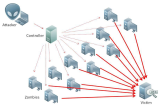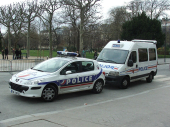
As of May 1, approximately 50% of the 68,000 Ukrainian refugees who sought refuge in the Netherlands following Russia's invasion of Ukraine had secured paid
employment, according to a report from Statistics Netherlands (CBS). Notably, Ukrainian refugees do not require work permits to enter the Dutch labor market, unlike other asylum seekers.
The employed Ukrainian refugees were predominantly engaged in temporary and on-call work, with many working for employment agencies or in the trade, transport, and hospitality sectors. The distribution of employed refugees was relatively even among age groups, with 44% of individuals aged 15 to 25, 55% of those aged 25 to 45, and 47% of individuals aged 45 to 65 reporting paid work as of May 1.
Despite the relatively high employment rate, many Ukrainian refugees expressed dissatisfaction with their work situations in the Netherlands. A study conducted by Inholland University of Applied Sciences revealed that only 30% of surveyed Ukrainians were satisfied with their Dutch employment. Furthermore, 59% expressed dissatisfaction with the opportunities available for work that matched their field of expertise and education level. Many Ukrainian refugees, who are often highly educated, found work in low-skilled service professions. One of the primary barriers to labor market integration cited was the inability to speak Dutch, as only 3% of respondents rated their Dutch language skills as proficient. Additionally, challenges related to accessing affordable language training, childcare, and financial stability were mentioned. The uncertainty surrounding their legal status also appeared to discourage some employers from hiring Ukrainian refugees.
While employment figures demonstrate progress in integrating Ukrainian refugees into the Dutch labor market, there remains room for improvement in terms of addressing language barriers, providing targeted training and support, and enhancing opportunities for employment matching individuals' qualifications and skills. Photo by Phil Whitehouse, Wikimedia commons.








































